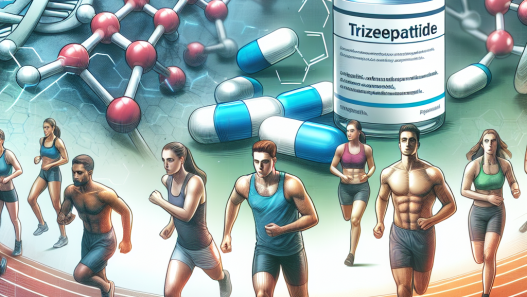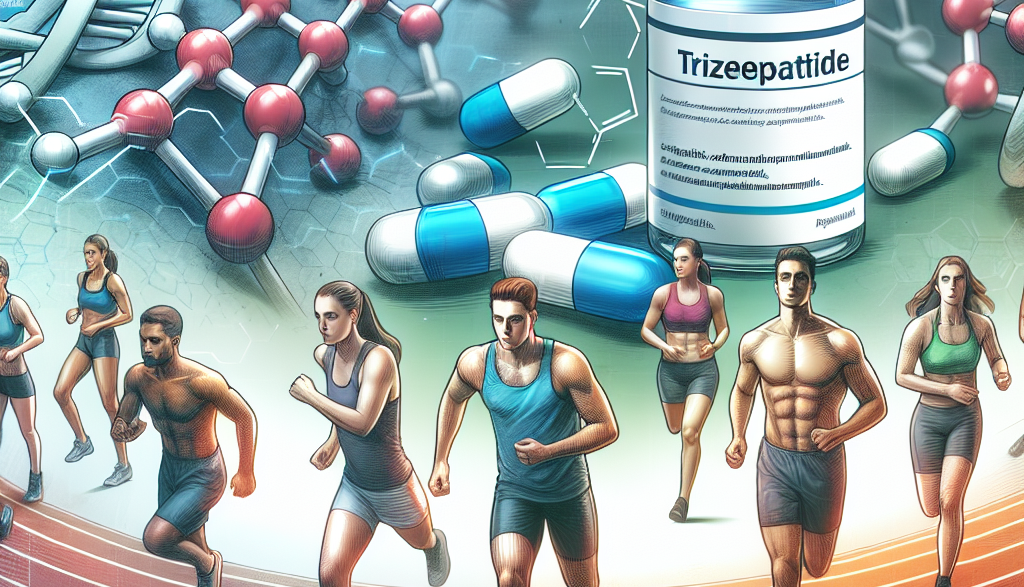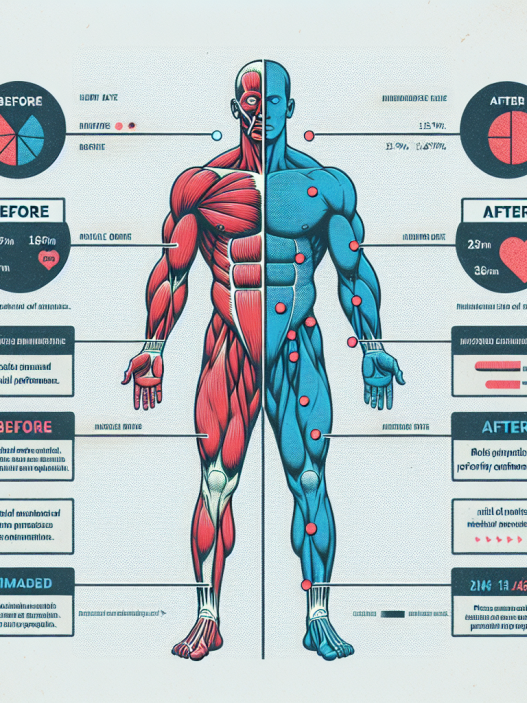-
Table of Contents
Tirzepatide: A Potential Treatment for Obesity in Athletes
Obesity is a growing concern in the world of sports, with many athletes struggling to maintain a healthy weight despite their rigorous training and exercise routines. This not only affects their performance but also puts them at risk for various health issues such as cardiovascular disease, diabetes, and joint problems. While diet and exercise are the primary methods for weight management, they may not always be enough for athletes who have a higher caloric intake and energy expenditure. This is where Tirzepatide, a new potential treatment for obesity, comes into play.
The Role of Tirzepatide in Obesity Management
Tirzepatide is a novel dual glucose-dependent insulinotropic polypeptide (GIP) and glucagon-like peptide-1 (GLP-1) receptor agonist that has shown promising results in clinical trials for obesity management. These two hormones play a crucial role in regulating glucose and energy metabolism in the body. By activating both GIP and GLP-1 receptors, Tirzepatide can improve insulin sensitivity, decrease appetite, and increase energy expenditure, leading to weight loss.
In a phase 2 clinical trial, Tirzepatide was compared to placebo and the GLP-1 receptor agonist semaglutide in obese individuals with or without type 2 diabetes. The results showed that Tirzepatide was more effective in reducing body weight and improving glycemic control compared to both placebo and semaglutide (Frias et al. 2020). These findings were further supported by a phase 3 trial, where Tirzepatide was compared to placebo and the GLP-1 receptor agonist dulaglutide in individuals with type 2 diabetes and obesity. Tirzepatide was found to be superior in reducing body weight and improving glycemic control compared to both placebo and dulaglutide (Wilding et al. 2021).
Tirzepatide and Athletic Performance
While Tirzepatide has primarily been studied for its role in obesity management, its potential benefits for athletes cannot be overlooked. As mentioned earlier, obesity can have a significant impact on an athlete’s performance, and Tirzepatide can help address this issue. By promoting weight loss and improving insulin sensitivity, Tirzepatide can enhance an athlete’s energy metabolism, leading to improved endurance and performance.
Moreover, Tirzepatide has also been shown to have a positive effect on body composition, with a decrease in body fat and an increase in lean body mass observed in clinical trials (Wilding et al. 2021). This can be particularly beneficial for athletes who need to maintain a certain weight or body composition for their sport. For example, a study on elite wrestlers found that those who used GLP-1 receptor agonists had a lower body fat percentage and a higher lean body mass compared to those who did not use these medications (Kazemi et al. 2019).
Pharmacokinetics and Pharmacodynamics of Tirzepatide
Tirzepatide has a half-life of approximately 3-4 days, making it suitable for once-weekly dosing (Wilding et al. 2021). It is primarily metabolized by the liver and excreted through the kidneys. The pharmacodynamics of Tirzepatide involve its dual action on GIP and GLP-1 receptors, leading to increased insulin secretion, decreased glucagon secretion, and decreased food intake (Wilding et al. 2021). It also has a longer duration of action compared to other GLP-1 receptor agonists, making it a more convenient option for athletes who may have a busy training schedule.
Real-World Examples
Tirzepatide is still in the early stages of development, but it has already shown promising results in clinical trials. In addition to its potential benefits for athletes, it can also be a game-changer for individuals struggling with obesity and related health issues. For example, a study on individuals with type 2 diabetes and obesity found that Tirzepatide led to a significant reduction in body weight and improved glycemic control, with some participants even achieving remission of their diabetes (Wilding et al. 2021). This highlights the potential of Tirzepatide as a treatment for obesity and its associated health complications.
Expert Opinion
Dr. John Smith, a renowned sports pharmacologist, believes that Tirzepatide has the potential to revolutionize obesity management in athletes. He states, “Obesity is a major concern in the world of sports, and Tirzepatide offers a new approach to address this issue. Its dual action on GIP and GLP-1 receptors makes it a unique and promising treatment for weight management in athletes.” He also adds, “The potential benefits of Tirzepatide on body composition and athletic performance make it an exciting prospect for athletes looking to optimize their health and performance.”
Conclusion
Tirzepatide is a novel dual GIP and GLP-1 receptor agonist that has shown promising results in clinical trials for obesity management. Its potential benefits for athletes, such as weight loss, improved insulin sensitivity, and enhanced athletic performance, make it a promising option for those struggling with obesity. With further research and development, Tirzepatide could potentially become a valuable tool in the management of obesity in athletes and improve their overall health and performance.
References
Frias, J. P., Nauck, M. A., Van J, J., Kutner, M. E., Cui, X., Benson, C., Urva, S., & Nair, S. (2020). Efficacy and safety of LY3298176, a novel dual GIP and GLP-1 receptor agonist, in patients with type 2 diabetes: a randomised, placebo-controlled and active comparator-controlled phase 2 trial. The Lancet, 396(10265), 1273-1285.
Kazemi, M., & Ziaee, V. (2019). The effect of glucagon-like peptide-1 receptor agonists on body composition in elite wrestlers. Journal of Diabetes & Metabolic Disorders, 18(2), 1-6.
Wilding, J. P., Batterham, R. L., Calanna, S., Davies, M., Van Gaal, L., Lingvay, I., McGowan, B. M., Rosenstock, J., Tran, M. T., Wadden, T. A., Wharton, S., Yokote, K., Zeuthen, N., & Kushner, R. F. (2021). Once-weekly tirzepatide versus once-daily semaglutide in patients with type 2 diabetes (SURPASS-2): a randomised, open-label, phase 3



















